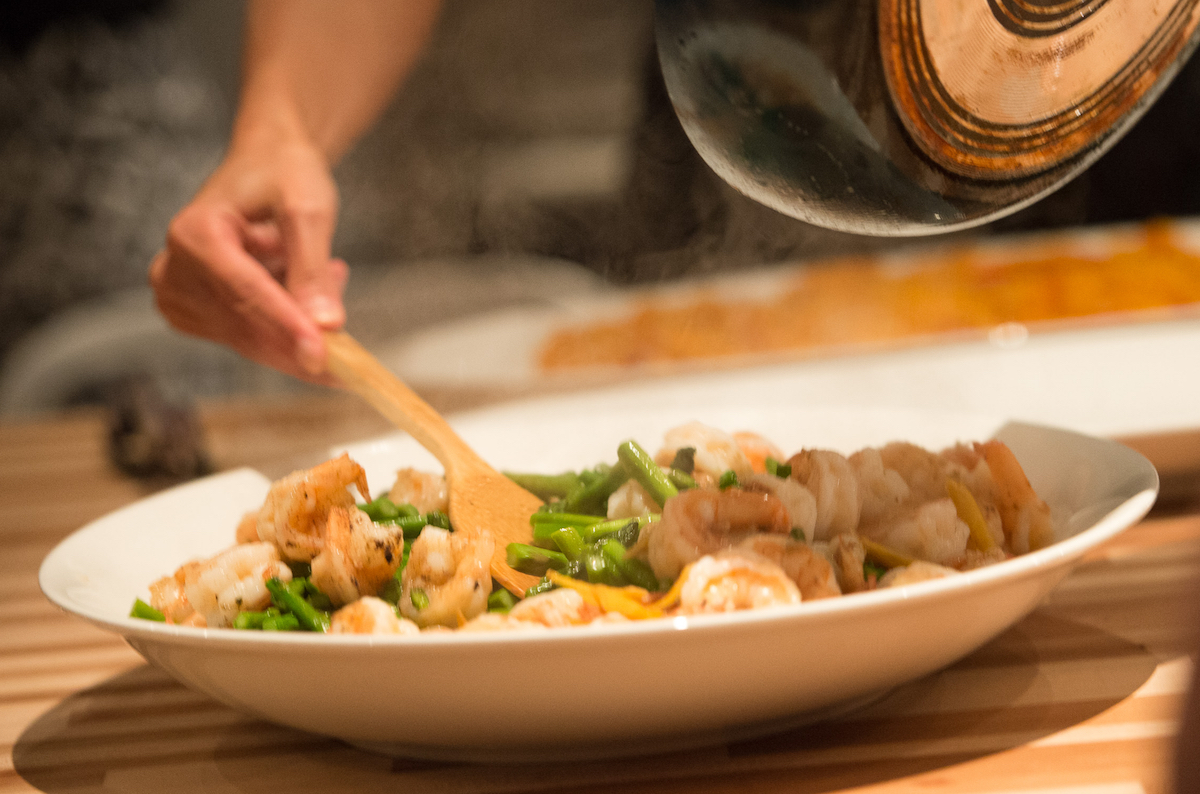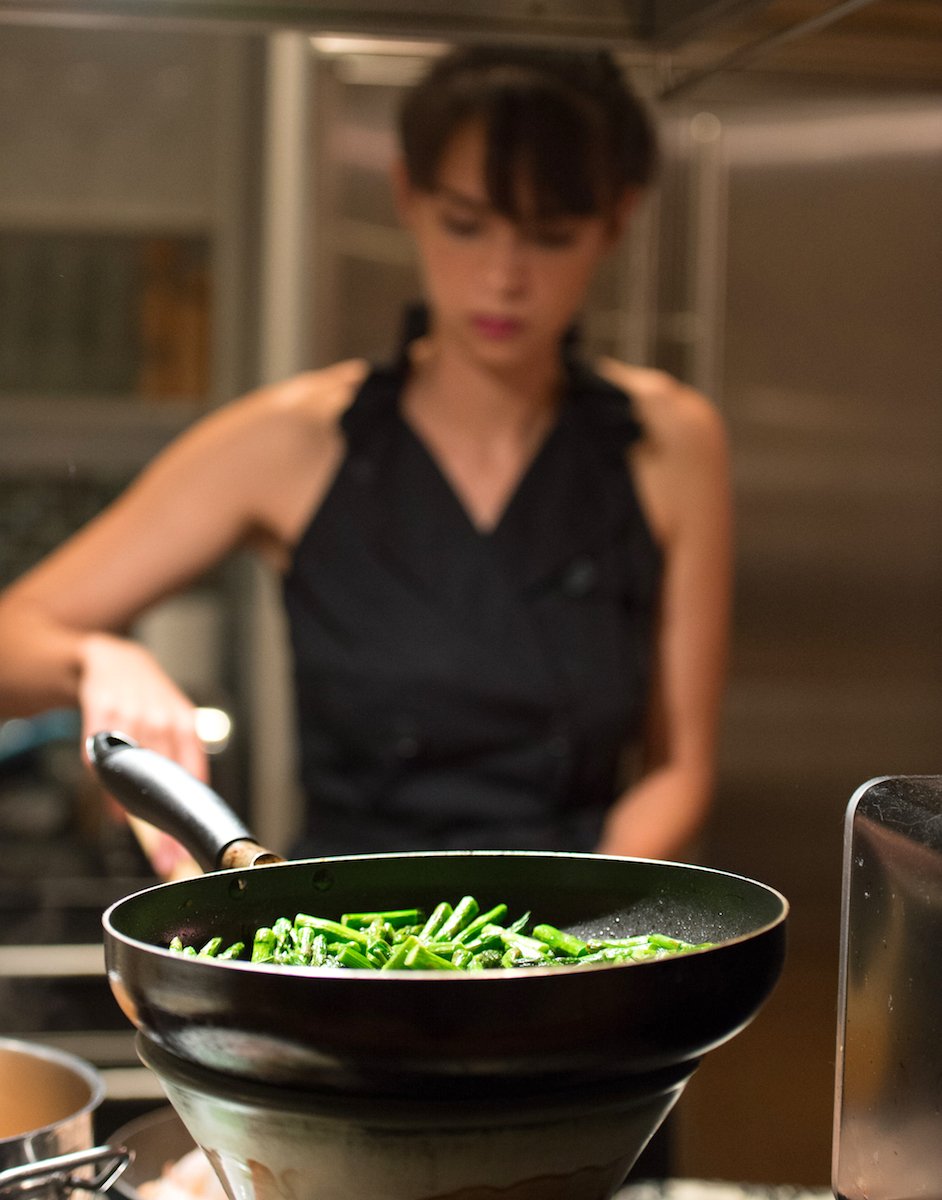This Tool Helps Aspiring Chefs Make Money Serving Home-Cooked Meals

If you’ve ever found yourself shouting at the TV during “Hell’s Kitchen” or dreamed of opening your own restaurant, there’s a new way to turn your passion for cooking into a business — without getting yelled at by Gordon Ramsay or taking out a second mortgage.
Catherine Nissen earns money hosting dinner parties at her Washington, D.C., home. She charges up to $65 a plate through EatWith, which aims to “bring chefs and foodies together one meal at a time.”
“I can fit 12 people at my table, and another eight at the counter on high stools,” Nissen said. Doing the math, a sold-out event could bring in up to $1,300. After EatWith takes its 15% cut for facilitating the transactions, Nissen would earn $1,105 for a single dinner.
Cooking up a Career Change as a Home Chef
Nissen isn’t a professional chef, but said she’s using EatWith to change her career.
“I’m not completely new to cooking,” she explained. “I mentored with a famous Lebanese chef for 8 years, but I do not have culinary school or professional kitchen experience.”
Still, the former shoe and jewelry designer is having a blast on the platform that lets her express her creativity in a new way. Since joining in April 2016, she’s experimented with new menus and pairings, and loves the “instant gratification” of seeing guests enjoy something she made.
Nissen credits her mother for inspiring her love of cooking. “She can make the most regular ingredient extraordinary,” she explained. “She is definitely a perfectionist and a very meticulous chef and she set my standards really high.”
Hosting isn’t quite a full-time income yet, but Nissen is confident it can be. To follow her passion for cooking, she’d been contemplating going to cooking school. On deciding to host with EatWith, she explained, “I felt that getting right into it, a little elbow grease and hosting street smarts, would be the best school for me.”
She added,“The difference between my dishes when I started, and my dishes now are night and day thanks to EatWith. Practice makes perfect.”
And she’s focused on growing her business.
“EatWith allows me to learn to be entrepreneurial — with someone holding my hand on the side if I need it,” Nissen explained. She’s planning partnerships with local specialty grocery stores and organizing events for local food bloggers and hotel concierges.
Feeding Strangers… In Your House?

I asked Nissen if she was nervous inviting strangers into her home, but as she pointed out, “Most of the time the guests are more apprehensive,” adding that you can approve or decline any reservation requests through the EatWith system.
“Nothing ventured, nothing gained,” she said, smiling.
EatWith is one of several startups aiming to disrupt the restaurant industry by offering private dining experiences with awesome amateur chefs. Others include Feastly, Bon Appetour, and VizEat, which all allow you serve meals and host foodies in your home.
These platforms are free to join, but have a “rigorous” vetting process to make sure the dining experience is safe and delicious for guests all around the world.
For example, EatWith individually reviews each host’s application, and a quality control team member visits your home to evaluate the uniqueness and cleanliness of your hosting space, the taste of your food, and your overall passion.
How This Home Chef Found Her First Customers… and Keeps Them Coming Back
While Bon Appetour and VizEat cater to travelers and tourists, Nissen said her most common diners are locals out for a unique first date or a one-of-a-kind dinner party they don’t have to host. After her first couple of dinners, word began to spread, and repeat customers would bring their friends to try out the latest menu offering.
“Honestly, it all comes down to the pictures,” Nissen said, after I asked her what made her listings stand out on the EatWith platform.
“We eat with our eyes first, and then our other senses come into play, especially when it’s online. I shoot every dish from two angles, and add in some shots of the venue,” she explained.
Beyond mouthwatering pictures, Nissen also improves her visibility by encouraging guests to leave reviews on EatWith. One reviewer wrote, “I will be going to her house now for my third time in the past two months, mainly for that coconut rice and to stand in her Pinterest-worthy open kitchen,” and added, “What makes this experience so memorable is Catherine’s passion for cooking. She’s so thoughtful and meticulous about the ingredients she uses, it will inspire you to try something new.”
Legal Considerations
Is this even legal? Do you need a food handler’s permit or liquor license?
Like many sharing economy platforms, EatWith ducks the inevitable questions about regulatory and licensing requirements; it says “each host is responsible for managing his or her own legalities and regulatory compliance,” and recommends hosts consult with an attorney.
Nissen said she obtained a regular food handler’s permit and hasn’t run into any legal issues so far. Guests bring their own wine, like they might to any other dinner party.
EatWith provides hosts with a $1 million third-party insurance policy to cover “the rare event a guest suffers some type of damage” during your event.
What It’s Like to Host Through EatWith

On the menu this week are seared Vietnamese shrimp, chardonnay-simmered lentils and roasted chicken thighs with crispy potatoes. Nissen accepts reservations up to two months in advance, but had a few openings for dates within seven days.
When no one books a reservation, she doesn’t need to buy food or pay a waitstaff, making it a low-risk, low-overhead operation.
At $65 per plate, Nissen nets $55.25 per guest after the EatWith platform fee. If she serves 10 people, that’s $552.50 in revenue, of which she might spend $100 or $120 on the raw ingredients — netting her $430 or so.
The dinner parties last two hours, on top of which Nissen has several hours of shopping, prep and clean-up time. EatWith processes her payouts three times a week.
Naturally, the more guests you can accommodate at a single event, the better your profit.
“Six guests is my minimum,” Nissen explained, but added she did a few smaller events when she started, both to practice her recipes and build up some positive reviews.
How does hosting meals compare with her previous careers? According to Nissen, “Cooking is way more fun! EatWith gives me the freedom and flexibility to set my own menu, schedule and dining experience.”
Your Turn: Would you ever host strangers in your house for dinner? What would you serve?
Nick Loper is the author of Buy Buttons: The Fast-Track Strategy to Make Extra Money and Start a Business in Your Spare Time. He also hosts the top-rated Side Hustle Show podcast at SideHustleNation.com, a growing community and resource for aspiring and part-time entrepreneurs.
















